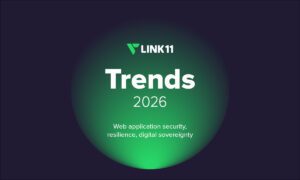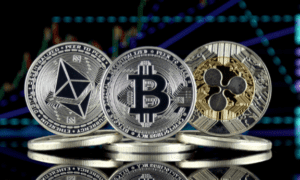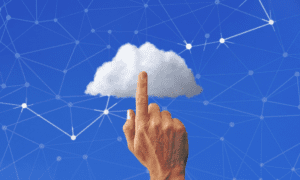In the last decade, artificial intelligence has learned to see, speak, and create. But now it’s learning something even more profound — how to act. Algorithms that once relied on human instruction are beginning to function independently, making economic decisions and trading digital value without supervision. The age of autonomous AI is arriving, and at its foundation sits a new kind of infrastructure: Corvix — a blockchain-based framework designed to give intelligent systems their own economic identity.
Corvix doesn’t just tack “AI” onto blockchain as a buzzword. It’s built from the ground up to solve a real, emerging problem — how will autonomous agents verify trust, execute transactions, and collaborate safely in a decentralized environment? For that, machines need an operating system for economics. Corvix wants to be exactly that — the economic engine of intelligent automation.
The Rise of Economic Intelligence
Until recently, artificial intelligence existed in an auxiliary role — helping humans write code, analyze data, or make business decisions. Corvix’s creators argue that this model is outdated. AI no longer needs to wait for human input; it can already optimize itself, interact with other systems, and even purchase digital resources when given the right framework.
This shift, sometimes referred to as the machine-to-machine (M2M) economy, is more than a concept. Financial trading algorithms negotiate millions of microtransactions per second. Chatbots can access APIs and retrieve data from paid sources. Industrial AIs are beginning to purchase real-time sensor inputs to improve performance. But these systems remain fragmented — dependent on centralized intermediaries and proprietary gateways.
Corvix’s vision is to unify these operations. It provides the protocol layer that allows intelligent systems to transact securely and autonomously. “If AI is going to make real-world decisions, it also needs a real-world way to handle value,” says one of the network’s developers. “That’s what Corvix is building — trust and verification at machine speed.”
Under the Hood: The Corvix Architecture
The technical foundation of Corvix is built on three interconnected layers, each designed for scalability and real-time performance.
- The Core Blockchain Layer — The backbone of Corvix, this layer ensures transactional integrity using a high-speed consensus model. It supports thousands of interactions per second, allowing autonomous agents to exchange value instantly without clogging the network.
- The Adaptive Contract Layer — Here lies Corvix’s true innovation: adaptive smart contracts that evolve with context. Traditional contracts are rigid, requiring external updates for every change. Corvix’s contracts can adjust terms dynamically based on inputs from AI systems — such as performance metrics, environmental data, or market behavior.
- The Integration and Interconnect Layer — This component ensures compatibility. Corvix connects to major blockchain ecosystems and integrates directly with AI APIs. Developers can plug in machine learning models, allowing them to make or receive payments automatically based on coded conditions.
Together, these components make Corvix more than a blockchain — they make it a transactional intelligence system. It’s the foundation upon which autonomous decision-making can exist in a verifiable, transparent economy.
Trust as a Feature, Not an Afterthought
If AI is to operate independently, trust cannot be optional — it must be inherent. Corvix approaches this by embedding transparency and accountability into every transaction.
Each interaction, whether between two autonomous agents or a human and an algorithm, is immutably recorded on the blockchain. This ensures that every data exchange, purchase, or output is traceable, auditable, and explainable. In industries where AI decisions carry enormous weight — such as finance, healthcare, or logistics — this level of visibility is not just valuable, it’s essential.
Corvix’s governance system adds another layer of confidence. Rather than relying on a central authority, the protocol’s evolution is driven by its community. Developers, token holders, and enterprises can vote on upgrades, integrations, and policy changes — ensuring that Corvix remains open, secure, and aligned with ethical AI development.
Bridging AI and the Real Economy
What makes Corvix compelling isn’t only its technology — it’s the vision of connection. The platform bridges two worlds that have long existed in parallel: the traditional financial system and the rapidly expanding AI ecosystem.
For businesses, this means the ability to automate entire workflows — from resource procurement to settlement — without sacrificing compliance or control. For AI developers, it offers a programmable way to monetize or exchange data, models, and compute power.
Corvix transforms economic interaction into a programmable interface, where algorithms can interact as economic agents. It’s not science fiction — it’s the infrastructure needed for AI to operate responsibly at scale.
The Dawn of the Autonomous Economy
The implications of Corvix stretch far beyond blockchain or AI. It hints at a near-future world where value flows freely between humans and machines — where digital agents participate as accountable entities in global commerce.
In this new paradigm, a fleet of autonomous drones might pay for access to live weather data before making routing decisions. A network of AI-powered factories could license predictive maintenance algorithms from each other in real time. Each transaction is verified, recorded, and secured through Corvix’s blockchain layer.
This is the autonomous economy — a self-operating ecosystem where software not only computes but also contributes. And while the idea may seem futuristic, the foundation is already here.
A Quiet Revolution in Motion
Corvix represents an important inflection point in technological evolution. It’s the connective tissue between intelligence and accountability, between code and commerce. While most AI innovation focuses on cognition — on making machines smarter — Corvix focuses on structure: how those machines will safely and transparently interact once they begin acting on their own.
As industries embrace automation and digital agents proliferate, systems like Corvix will define the next generation of digital infrastructure. It’s not about decentralization for its own sake — it’s about building trustworthy autonomy at the scale of global economics.
The future of intelligence isn’t just in thinking machines. It’s in thinking machines that can act, trade, and trust. Corvix may just be the system that makes that future possible.




























